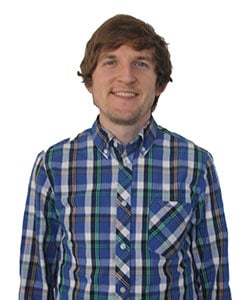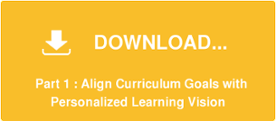Vision-setting can be a painful process. Hours may be spent on one twisting sentence. Long, awkward silences may follow periods of disagreement. Jargon can add up to something that everyone agrees to but no one really understands or finds inspiring.
It doesn’t have to be this way. As Education Elements has worked with districts across the country, we’ve found a few simple guidelines can help make the visioning process invigorating and inspiring rather than routine or frustrating.
1. Get the right people in the room to start, and consider who will be involved over time - This sounds simple, but spending time thinking about the type of team you want involved at the outset of your personalized learning vision-setting is critical. If you’re counting on principles of personalization to impact all levels of your organization, from IT support to HR decision-making to classroom instruction, you’ll likely want to include a diverse range of representatives early in the process. You can’t have everyone at the table all the time, but we recommend getting teachers, students, school and district administrators, and community members involved at some point in the process, either for idea generation or feedback.
2. Follow a process and protocols while vision-setting - Once the group is gathered, agree to a set of processes and protocols to help guide conversations. Creativity can flow from constraints; creating space for all to share what personalized learning means to them will bring new perspectives. As facilitators, we often keep a few things in mind:
- When do we need divergent thinking? There are times when you want everyone’s wild and crazy ideas, their deepest fears, and their greatest hopes out in the open. And there are definitely times when you do not. Naming those times, pausing to listen to everyone, and orienting the group to think boldly can lead you in directions you may not have anticipated.
- When do we need convergent thinking? There are times when you need to limit the range of ideas and start to find the common ground your group values. Good facilitation coupled with protocols for discussion and decision-making can help everyone feel comfortable at this delicate stage of prioritization.
- When can we “put a marshmallow on it” and move on? We often begin design work with The Marshmallow Challenge, a collaborative exercise in which teams build a tower with the unlikely pairing of spaghetti and a marshmallow. Teams learn that at a certain point they have to test the integrity of their structure to see if it stands, or “put a marshmallow on it.” Similarly, during vision and purpose-setting, clarity on when the team needs to wrap up an idea and move on is paramount.
3. Go with your gut and make your words pop - Too often, vision-setting can fall prey to the language of “education strate-gese,” that stock of familiar words and phrases that get you comfortably out of a conversation and keep heads nodding (e.g. “we seek to differentiate instruction to provide scaffolding for all of our 21st century learners”). There are a couple of risks to playing it safe and familiar. For one, the vision may be composed of words or ideas that have been used so often in so many different contexts that their meaning has eroded; partly because of that, the vision is distinctly forgettable.
We believe that a vision should be as meaningful as it is memorable, which is why we often refer to a district’s vision for PL as its “rallying cry,” something that everyone can remember and support. Company slogans like “Think Different” or “Just Do It” represent creative mindsets for getting work done as much as they represent globally recognized brands.
|
Developing a PL Vision: Metropolitan District of Warren Township (IN) At MSD Warren Township, the philosophy “We are all Learners” guides much decisionmaking. But when this district created its vision for personalized learning, district leaders named many different reasons for pursuing PL: “Freedom to explore as a learner”; “Access to quality learning”; “Failure implies learning to be better”; “Student ownership”; “Learning is fun”; “Change is normal”; “Growing at my own pace”; “Student always”; and “Future ready” all were associated with a shift to PL. Kate Schwartz, Director of Professional Learning at MSD Warren, reflected on the process, “Creating a vision will challenge the philosophy of education of most everyone at the table. Embrace the uncomfortable challenge of crafting a vision.” |
|
Sample PL Visions Vision statements are unique to each district. Take a look at a few examples to show a range of district approaches to framing the purpose of their personalized learning work:
|
4. Get feedback and iterate - The last thing to keep in mind during early vision-setting is that while the pressure for perfection may keep intensity high, it’s OK to arrive at an agreed-upon first round vision and be open to feedback. In fact, that will likely allow your group to improve upon its initial thinking.
Once you’ve created a vision, communication of that vision is key. For lessons learned on that topic and detailed examples from across the country, see the Personalized Learning Communications Guide from Education Elements and the Learning Accelerator.





